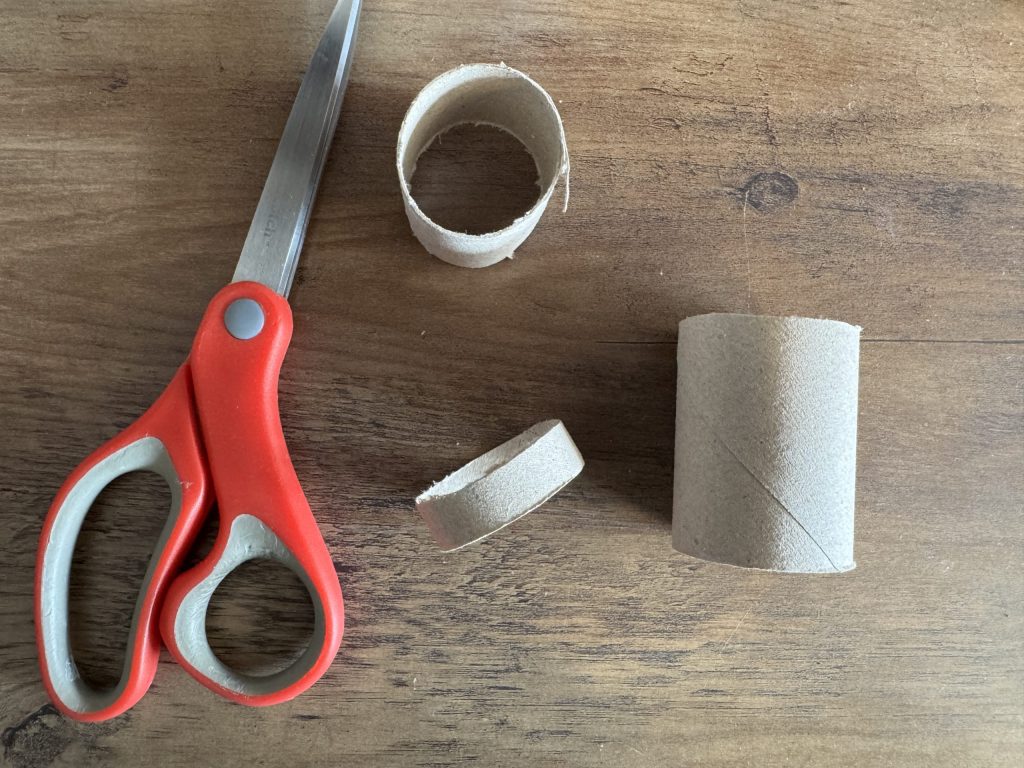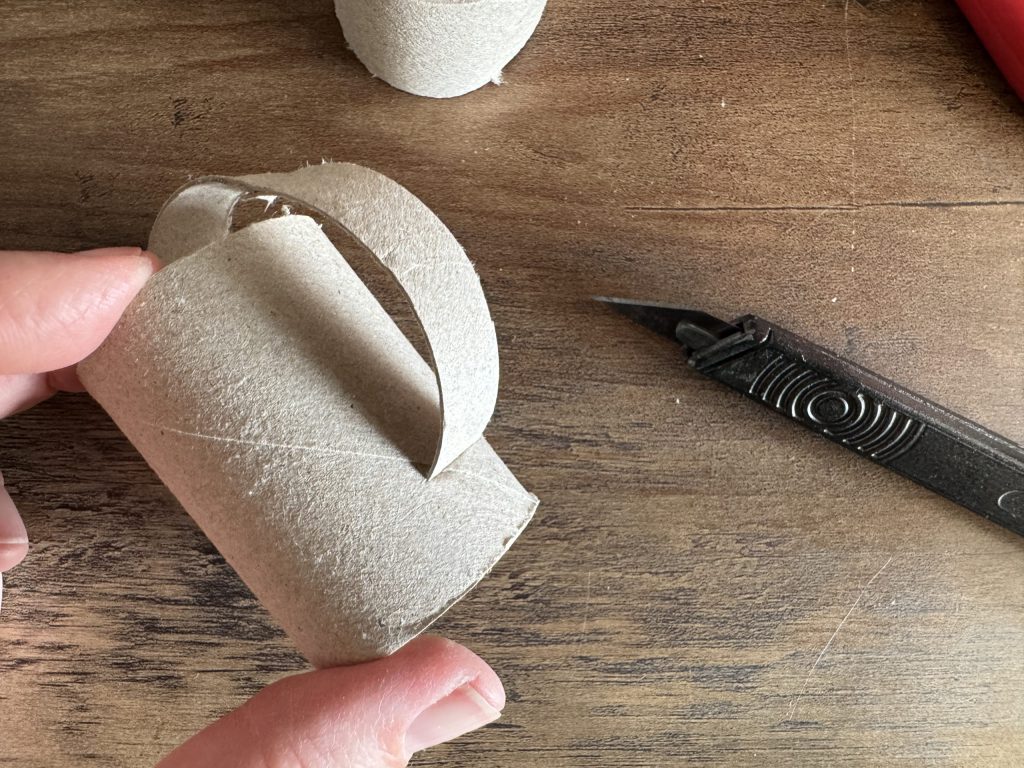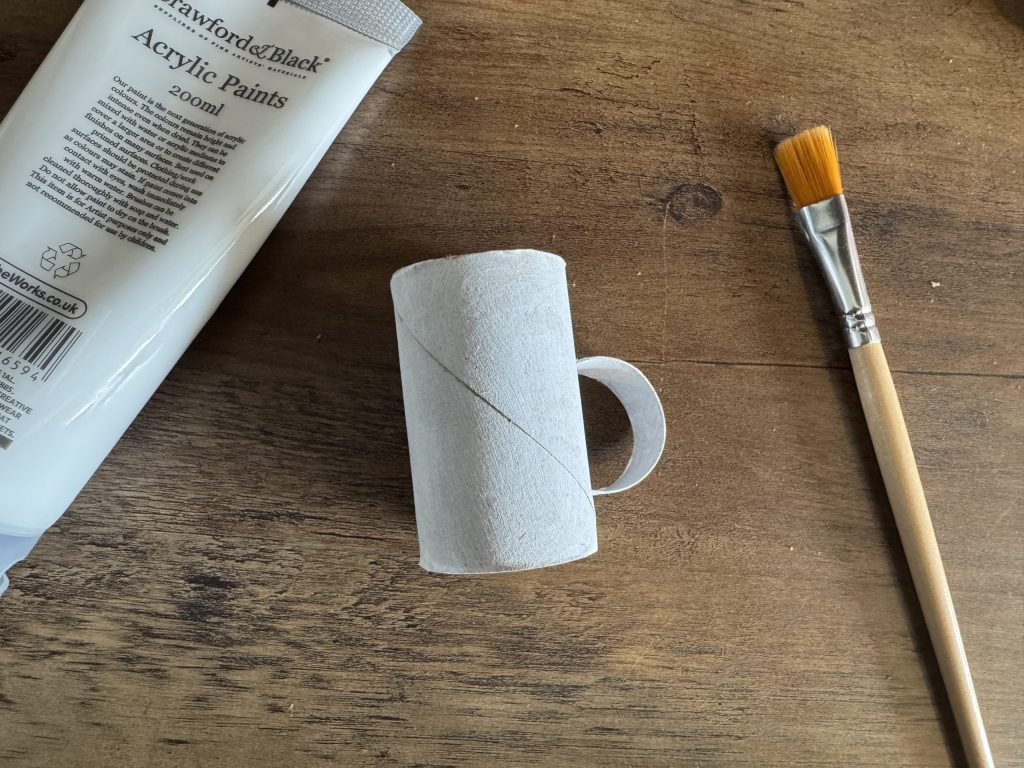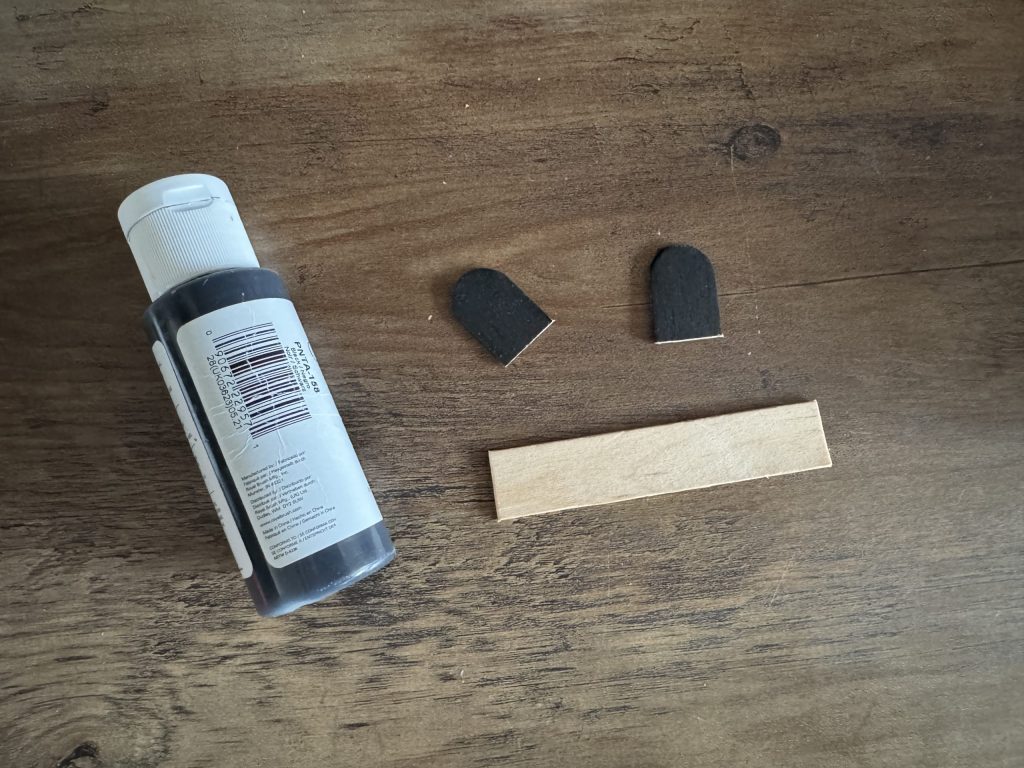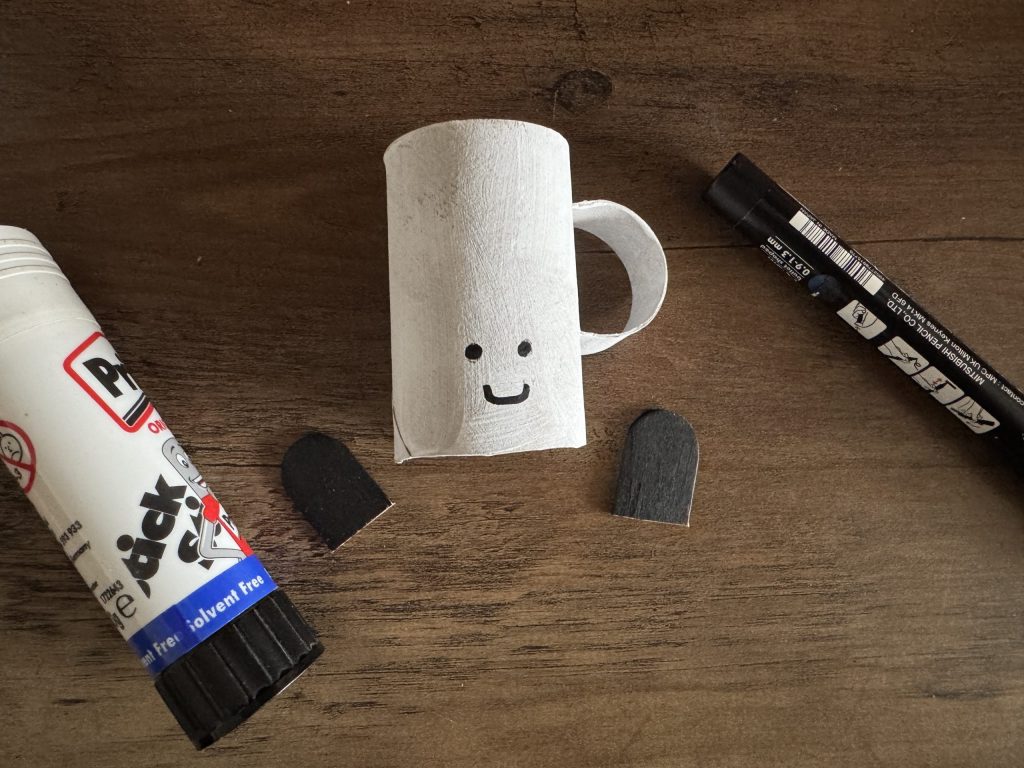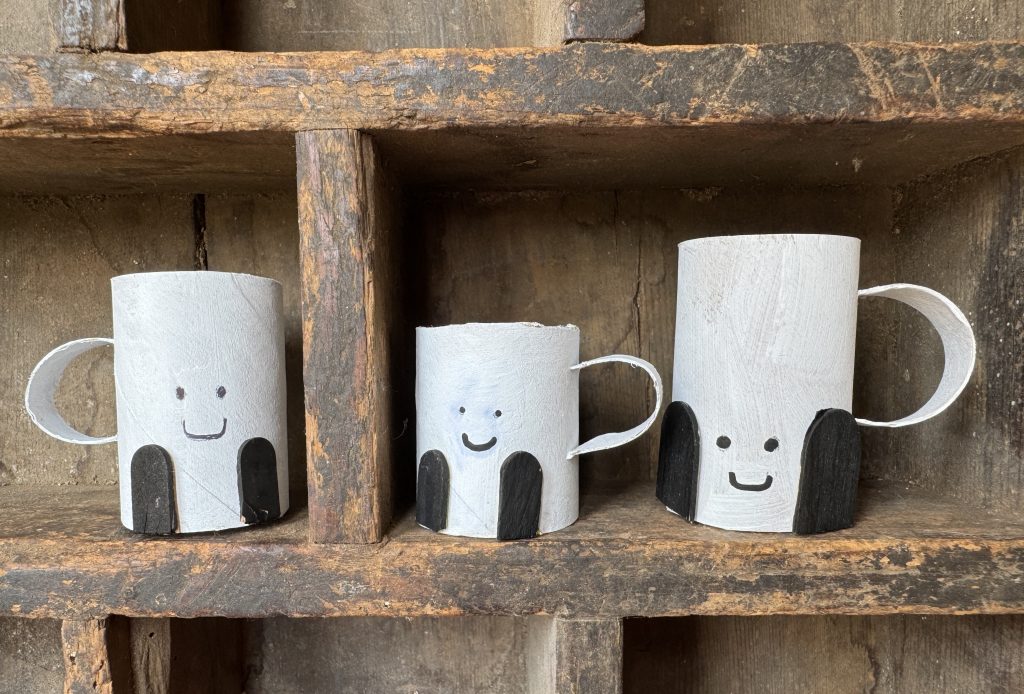My daughter has been obsessed with Jellycat toys for a while and has a sweet collection of them. Why do people love Jellycat so much? They are super soft and so fluffy, and we love that they are everyday objects as well as animals. We’ve made our own Jellycat inspired birthday cake and even little clay Jellycat models too! Why not make your own Jellycat inspired coffee cup craft with us today. We recycled cardboard tubes to make our own version of the Jellycat coffee cup. These make cute pencil pots or desk ornaments.
Jellycat inspired coffee cup craft
Our Jellycat inspired coffee cup craft is inspired by the Amuseables Coffee Cup with little feet and a smiley face. To make your own you will need the following supplies:
cardboard tubes
white paint
scissors
craft sticks
black pen
How to make a Jellycat inspired coffee cup
First cut your cardboard tube to about 5 cms high. This will be the coffee cup. Cut another strip about 1 cm for the handle.
Using a craft knife carefully cut two small slits to push the handle through. You can also trim the handle and glue in place.
Apply two coats of white paint to the coffee cup and handle and set aside to dry.
Cut the curved ends from a wooden craft stick and paint black for the feet.
Draw a smiley face on your coffee cup and glue the feet in place.
You have made your very own Jellycat inspired coffee cup! We made a couple of cups of varying sizes, they look so cute together!
Let me know if you try making your own Jellycat inspired coffee cup.


